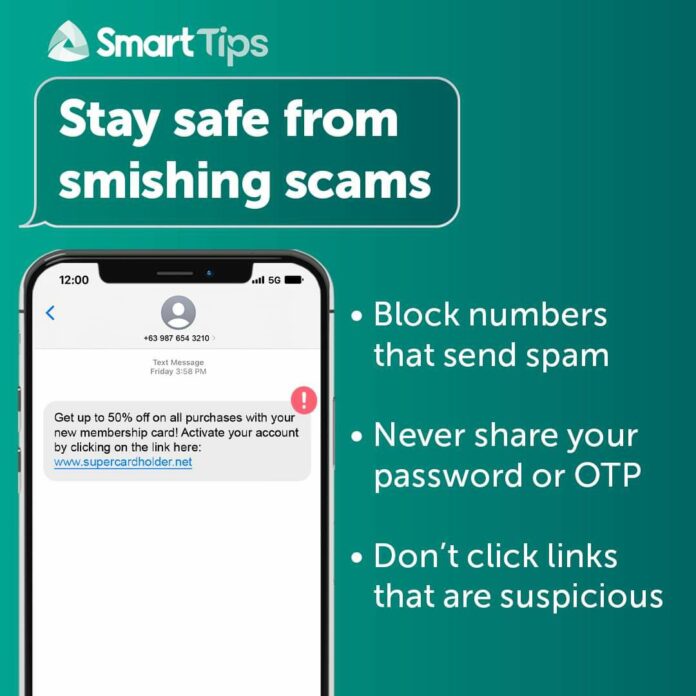Have you received a text message from an unknown number containing a suspicious link? There’s a big chance it is a smishing scam attempt, a phishing attack executed through mobile text messaging and mobile messaging apps.
The term “smishing” combines “SMS” (short message services or texting) with “phishing,” in which cyber criminals send fraudulent emails to trick the recipient into clicking a malicious link. As smishing scams happen via text or messaging apps, victims are deceived into giving sensitive information to a disguised attacker, which the latter will use to steal money or commit other types of fraud.
There are two common methods that cybercriminals use for smishing scams. First is by sending the recipient a link to download malware (malicious software disguised as a legitimate app) on their smartphone, wherein the victim might type confidential information which will be sent directly to the attacker. The second is by sending a link that will lead to a fake website in which the victim might also be scammed into keying in personal data.
In other words, smishing relies on the exploitation of one’s trust by posing as a credible individual or organization. Attackers might customize the message to make it seem like it’s from someone you know, or prey on your emotions to force you to take action. These scams can be disguised in many forms such as a contact tracing form, fake job opportunities, financial services, free products, invoice or order confirmation, customer support, and more.
Smishing scams pose a real threat to all mobile users, and this is why mobile services provider Smart Communications, Inc. (Smart) has come out with these three simple and smart tips to keep your prepaid or postpaid account safe at all times.
- Block numbers that send spam. Immediately take yourself out of the attacker’s range by blocking unknown numbers with suspicious messages and links.
- Never share your password or one-time pin (OTP) as a reply to a random message. Be very suspicious of calls, e-mails, SMS, o social media messages asking for this information. Moreover, only input your password or OTP on official and legitimate websites and platforms.
- Don’t click links that are suspicious. Always be wary of links that you receive via text from unknown numbers.
Cybercriminals are everywhere and are constantly finding ways to hack the system to scam whomever they can, so it’s important to stay vigilant and keep your guards up. For more tips, visit https://blog.smart.com.ph/tips-to-protect-your-smart-prepaid-and-postpaid-accounts-at-all-times and follow Smart’s official accounts on Facebook, Twitter, and Instagram for the latest offers, promos, and services.
